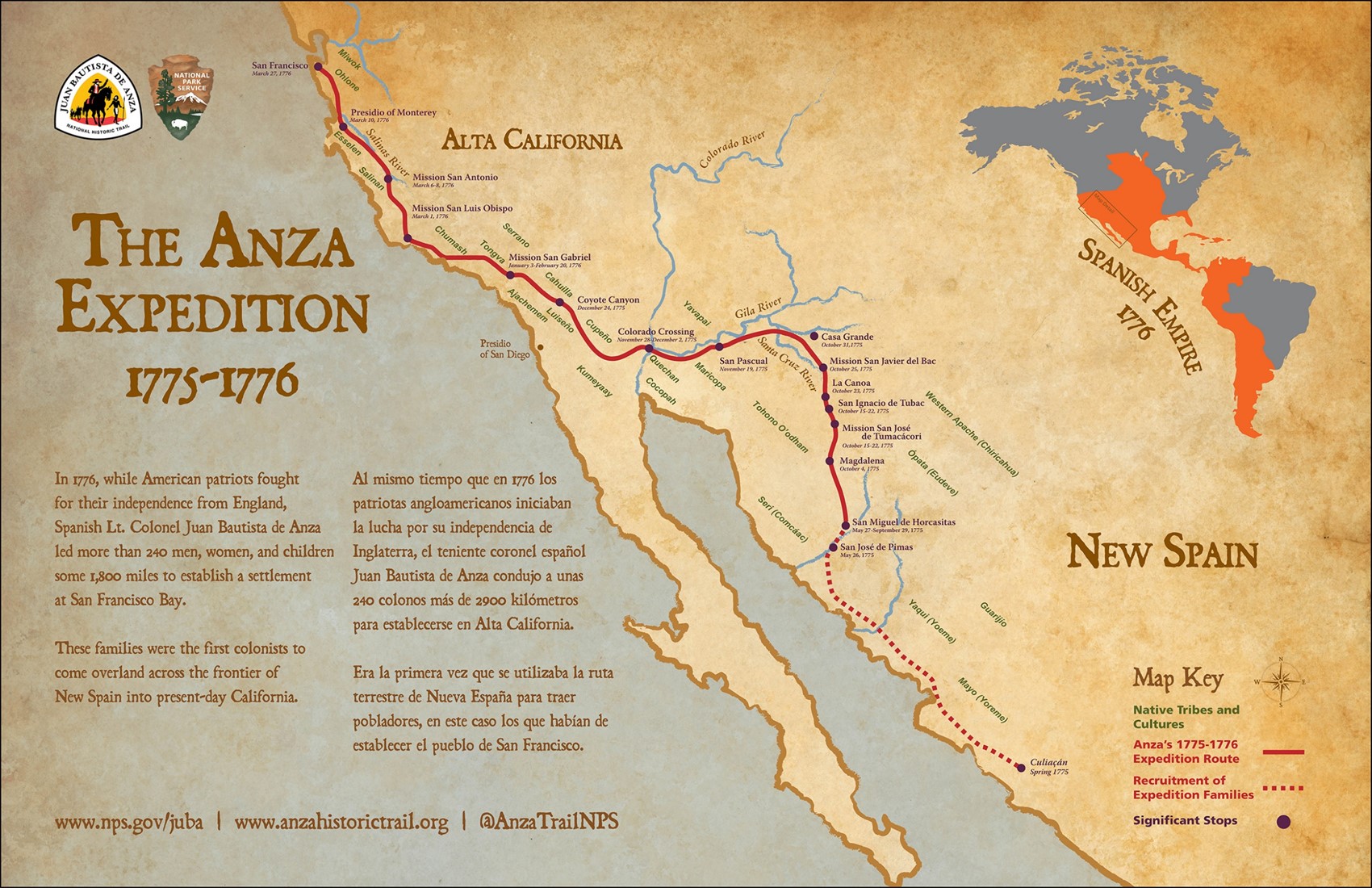2025 Project Update
250th Anniversary in 2026

In the fall of 1775, nearly 240 expedition members, including over 100 women and children of mixed Indigenous, African, and European descent representing the lower castes of colonial Spain, embarked on an eight-month journey to San Francisco, California. The expedition arrived in Carpinteria (Rincon Point) on February 24, 1776. The Anza Spanish expedition was a precursor to the drastic alteration of the physical and social landscape of California's Native American population.
Diary entry by Pedro Font, a member of the expedition.
February 24, 1776 — We set out from the Río de Santa Clara at half-past nine in the morning and, at half-past three in the afternoon, halted on a small bluff by the sea near the village of La Rinconada, having traveled some nine leagues: three to the west, as far as the seashore and the first village of the Canal de Santa Bárbara, called La Carpintería, situated near the Río de la Asumpta; and the remainder, west by north, with some slight, negligible deviation to the west at the several points on the coast.
Project History
Location:
Santa Barbara County
Description:
In 2016, the Trails Council began collaborating with the National Park Service staff to achieve the goal of certifying the Anza Trail route in Santa Barbara County.
The Juan Bautista de Anza National Historic Trail provides a poignant glimpse into the past. This trail traces the route taken by Juan Bautista de Anza and his expedition in 1775-76 as they journeyed from Mexico to establish a land route to Alta California. In Santa Barbara County, hikers, cyclists, and equestrians can traverse portions that parallel historic routes, allowing them to imagine the arduous journey undertaken centuries ago. The trail serves as a living history lesson, reminding us of the region's foundational narratives and the cultural exchange that shaped its development. Generations of people living in what is now California have been and continue to be impacted by the colonial actions of the Spanish Empire. Colonization came at the expense of the indigenous peoples through subjugation and the taking of land. The resulting colonization was a significant catalyst for change in natural and cultural landscapes.
The route followed by the Anza expedition is essentially the same as the one planned for the California Coastal Trail. The Coastal Trail and the Anza Trail both have gaps. While we are fortunate that they share the same footprint, we still face challenges in completing segments that cross privately owned and state-owned land along the coast of Santa Barbara County. We expect to be able to certify and sign the Anza trail through Carpinteria, Santa Barbara, Goleta, and Guadalupe by 2030.
The Anza Trail is a living heritage trail that reflects the entire history of the land it traverses, encompassing both the past and present. Two and a half centuries ago, the men, women, and children who were expedition members represented a mix of Indigenous, African, and European heritages, reflecting the lower castes of colonial Spain. For the immigrants, this journey symbolized a "new beginning." However, for Native Americans, this migration dealt a devastating blow to their tribal world and marked the beginning of a long period of profound loss and struggle. To learn more about the tribal communities whose lands Anza traveled through, which continue to thrive and pass on their traditions, read the recently published Travel Guide to Tribes Along the Juan Bautista de Anza National Historic Trail.
Partner:
National Park Service
Juan Bautista de Anza National Historic Trail
440 Civic Center Plaza, Suite 300
Richmond, CA 94804
